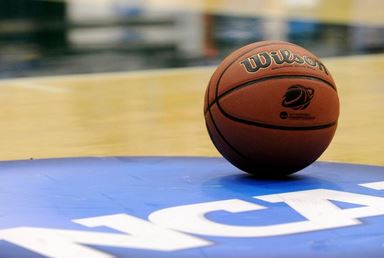Podcast: Play in new window | Download
Subscribe: RSS
Here we are again. It’s late February. With March just days away, it’s time to focus our attention on college basketball.
On Sunday, March 17 (it seems to be getting later every year), the NCAA men’s basketball tournament field will be announced. The selections for this year’s women’s college basketball tournament will be announced one day later.

The current format of the tournament calls for 64 teams to play first round games beginning on Thursday, March 21 and Friday, March 22. There are four regions of 16 teams apiece. The 16 teams in each region are seeded from #1 to #16 based on the determination of the selection committee.
The first round features a fairly even match-up between the #8 vs. #9 teams. On the other end of the bracket, the game featuring the #1 seed vs. #16 team in the opening round is usually a snoozer unless the underdog jumps to an early lead to get the crowd behind them.

In 2018, the #1 seed Virginia Cavaliers were clobbered 74-54 by a #16 seed commuter college named the University of Maryland-Baltimore County. That was the first time a 16 seed had beaten a #1 team in Round 1. The UMBC Retrievers are now a March Madness legend.
Last year in 2023, it happened again. #1 seed Purdue lost to #16 Fairleigh Dickinson 63-58. FDU would lose in their second round game.

The all-time record for #1 seeds against #16 teams is now 150-2. There is a 1.3% chance of this type of upset happening again in March.
On the women’s side, the #16 seed has posted just one victory as well. In 1998, #16 Harvard took down #1 seeded Stanford 71-67.
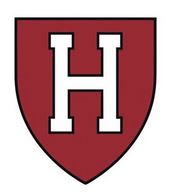
Back to the men’s basketball tournament, there have been eleven #15 seeds which have upset a #2 seed during the first round. That is still a measly 7.2% chance of springing an upset.
However, a #15 seed has taken down a #2 seed in each of the last three years. In 2021, #15 seed Oral Roberts surprised #2 Ohio State. St. Peter’s downed #2 seed Kentucky in 2022, while #15 Princeton sent Arizona home after their first game last year in 2023. Will it happen again in March, 2024?

Why are there 64 teams in the March Madness field?
The first NCAA men’s basketball tournament field was comprised of just eight teams in 1939. The teams selected were determined by a group of basketball coaches.
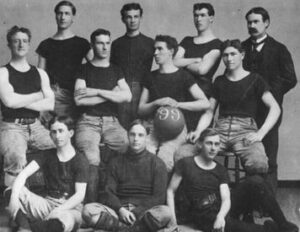
Twelve years later, the tournament was expanded to 16 teams in 1951. They restricted the field to just one team from each conference.
That didn’t last long. The field was stretched to 22 teams in 1953 with ten teams receiving a first-round bye.
The National Invitation Tournament (NIT) actually began one year before the NCAA’s basketball tournament. With all games played at New York City’s Madison Square Garden, the NIT had more media attention.
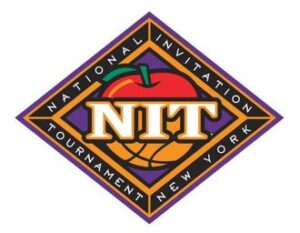
Originally just six teams in 1938, the NIT expanded just like the NCAA tournament. By the early 1950’s, the NIT was making competing offers to teams. They could choose between the 22-team NCAA invitation or opt to travel to New York City for the NIT.
The NCAA didn’t like being shunned. They amended their rules in 1971 after future Hall-of-Fame coach Al McGuire’s highly-ranked Marquette team turned down an NCAA bid in order to play in New York City’s NIT tournament.
Expansion of the NCAA tournament field grew to 32 teams in 1975. By 1980, the field had become 48 teams with the top 16 teams now receiving a first-round bye.
The 64-team field finally became a reality in 1985. All teams would have to win six games to become the national champion. Not surprisingly, the NIT’s importance started to fade from national prominence.
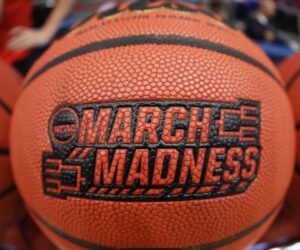
In 2011, the “First Four” play-in games were added. These games allow eight teams a chance to take four open spots in the NCAA tournament field of 64. Those games are currently played in Dayton, Ohio on the Tuesday and Wednesday nights prior to Thursday and Friday’s first round games. The First Four winners have less than two days to travel and prepare for their first round game.
Who gets into the NCAA basketball tournament field of 64 teams?
Ah, yes! This is where politics and television starts playing a bigger part of the game.
Beginning with the 2018/2019 basketball season, the NCAA implemented a sophisticated computer program called NET. That’s short for “NCAA Evaluation Tool”. This is used to provide ongoing rankings for men’s and women’s teams as they await possible selection for the the NCAA college basketball tournament field.
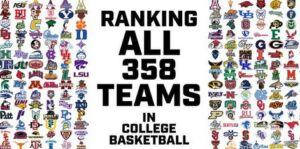
This system was developed to replace the former guidelines of the RPI (Ratings Power Index). The RPI system relied heavily on the team’s winning percentage, their opponents’ winning percentage, and their opponents’ opponents (I know – poor choice of terminology) winning percentage.
Today’s NCAA NET system relies on computer simulations and a highly touted “quadrant” ranking system. Your team’s wins and losses during the season are organized into quadrants 1 through 4 based on the game’s location (home or away or neutral court) and the opponent’s NET ranking.
Sound complicated? It really is.
However, I will show you that the current NCAA’s NET computer rankings for the 2024 men’s basketball field appear to be rather flawed, too.
Which teams would be in the NCAA men’s tournament today?
Glad you asked!
On the day which I prepared this post (Wednesday, February 28), the top four teams (with the projected #1 seeds) would be the University of Houston, Purdue, defending champion UConn, and Arizona. According to the NCAA’s NET rankings, the last four teams making it into the men’s tournament field of 64 would be Seton Hall (18-9), Oregon (18-9), Butler (15-12), and Xavier (13-14).
Wait a minute! Did the NCAA’s computer rankings show a team with just a 13-14 record as being the 64th best team in the country this week?

This is why the NCAA spends thousands of dollars to sequester its tournament selection committee in an Indianapolis hotel for the weekend when the tournament field is to be announced. Relying on their own computer system (though cost effective) could place a team with a losing record (Xavier) into the NCAA men’s tournament this year.
As of today, the NCAA’s NET computer rankings would have these conferences and teams into the men’s field of 64:
AAC – #37 Florida Atlantic (21-7) and #43 SMU (18-9)
ACC – #9 North Carolina (22-6), #10 Duke (21-6), #23 Clemson (20-8), #27 Wake Forest (18-10), #47 Virginia (20-8), #49 Pitt (18-10), and #60 Virginia Tech (15-13)
America East – None (top team is #100 Vermont at 21-6)
Atlantic Sun – None (top team is #159 David Lipscomb at 16-11)
Atlantic 10 – #20 Dayton (22-5)
Big 12 – #1 Houston (25-3), #8 Iowa State (21-6), #10 BYU (20-8), #14 Baylor (19-8), #17 Kansas (20-7), #33 Texas (18-10), #38 TCU (19-9), #40 Oklahoma (19-8), #42 Texas Tech (19-9), and #45 Cincinnati (16-12)
Big East – #3 Connecticut (25-3), #12 Marquette (21-6), #13 Creighton (20-8), #34 Villanova (16-12), #44 St. John’s (16-12), #54 Providence (18-9), #61 Seton Hall (18-9), #63 Butler (15-12), and those Musketeers of Xavier University at #64 (13-14)
Big Sky – None (top team is #129 Eastern Washington at 16-10)
Big South – None (top team is #109 High Point at 21-6)
Big Ten – #2 Purdue (25-3), #16 Illinois (20-7), #22 Wisconsin (18-10), #24 Michigan State (17-11), #41 Nebraska (20-8), #52 Northwestern (19-8), and #59 Iowa (17-12).
Big West – None (top team is #81 UC-Irvine at 19-8)
Coastal (CAA) – None (top team is #103 College of Charleston at 21-7)
Conference USA – None (top team is #83 Louisiana Tech at 17-8)
Horizon – None (top team is #124 Youngstown State at 17-9)
Ivy League – #51 Princeton (19-3)
Metro Atlantic (MAAC) – None (top team is #158 Fairfield at 17-10)
Mid-American (MAC) – None (top team is #99 Akron at 19-8)
Mid-Eastern (MEAC) – None (top team is #230 Norfolk State at 15-9)
Mountain West – #18 San Diego State (20-7), #25 New Mexico (20-7), #26 Boise State (18-8), #29 Colorado State (18-9), #35 Utah State (21-5), and #39 Nevada (22-6)
Missouri Valley – #31 Indiana State (23-5) and #46 Drake (22-6)
Northeast (NEC) – None (top team is #200 Merrimack at 16-10)
Ohio Valley (OVC) – None (top team is #116 Moorhead State at 17-8)
Pac-12 – #4 Arizona (21-6), #32 Colorado (18-9), #36 Washington State (21-7), #53 Utah (16-11), and #62 Oregon (18-9)
Patriot – None (top team is #135 Colgate at 19-9)
SEC – #5 Tennessee (21-6), #6 Alabama (19-8), #7 Auburn (21-6), #19 Kentucky (20-8), #28 Florida (19-8), #30 Mississippi State (19-9), #48 South Carolina (22-5), and #57 Texas A&M (15-12)
Southern (SoCon) – None (top team is #68 Samford at 23-4)
Southland – #55 McNeese State University (21-3)
Summit – None (top team is #165 South Dakota State at 14-12)
Sun Belt – #50 James Madison (25-3)
SWAC – None (top team is #223 Southern University at 13-11)
WAC – #58 Grand Canyon University (23-4)
West Coast (WCC) – #15 Saint Mary’s (22-6), #21 Gonzaga (21-6), and #56 San Francisco (21-7)
According to the NCAA’s NET computer rankings, the first four teams left out of the NCAA men’s tournament would be #65 Bradley (19-9), #66 Ohio State (16-12), #67 Maryland (15-13), and #68 Samford (23-4).

Time to fix your computer ranking system, NCAA!
Did you know that the NCAA’s computer rankings of the top 64 teams include eight schools with a losing record within their own conference? If those schools can’t even win half of the games played within their own conference, why should they participate in the national championship field of 64?
As of today, the #60 Virginia Tech Hokies have a 7-10 ACC record. In the Big 12, #33 Texas is 7-8 while #45 Cincinnati is a pitiful 5-10. The Big East overvalued teams include #44 St. John’s at 8-9, #64 Xavier at 7-9, and #63 Butler at 7-10 within their conference. The Pac-12’s #53 Utah is only 7-9 in conference play. The #57 Texas A&M of the SEC has posted a 6-8 record in conference games.

The NCAA March Madness Tournament field must include at least one team from each participating conference. Right now, the NCAA NET computer rankings would be leaving 18 conference tournament representatives out of the field.
That means that 18 of the NCAA computer’s top 64 teams must be sent packing from the tournament prior to the field being announced in just a few weeks.
Isn’t there a better way to do this?
Come back next time to evaluate some of the ideas being proposed to change the NCAA college basketball tournament in the coming years.

